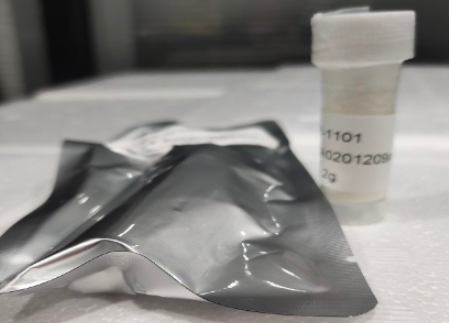文献:Evaluation of the physicochemical properties and the biocompatibility of polyethylene glycol-conjugated gold nanoparticles: A formulation strategy for siRNA delivery
作者:Kamil Rahme a b c 1, Jianfeng Guo d 1, Justin D. Holmes a b, Caitriona M. O’Driscoll
文献链接:https://www.sciencedirect.com/science/article/abs/pii/S092777651530148X
摘要:
Recently, the potential of gold nanoparticles (AuNPs) for transporting drugs, proteins and genetic materials has been demonstrated. Previously, our laboratory synthesised positively charged, surfactant-free AuNPs in water by the reduction of gold (III) chloride (AuCl3) using hydroxylamine hydrochloride (NH2OH·HCl) in the presence of l-cysteine methyl ester hydrochloride (HSCH2CH(NH2)COOCH3·HCl) as a capping agent. These AuNPs, which achieve higher cell viability in comparison to cetyl trimethyl ammonium bromide (CTAB, a surfactant)-capped counterparts, have demonstrated potential for siRNA delivery. However, it is well known that systemic administration of cationic delivery systems without biological stablising moieties causes non-specific binding with negatively charged serum proteins, resulting in particle aggregation and opsonisation. Consequently, highly stable AuNPs capped with l-cysteine methyl ester hydrochloride conjugated to poly(ethylene glycol) (PEG) were synthesised in this study. PEGylation enhanced the biocompatibility of the AuNPs by reducing toxicity in a range of cell types, by inhibiting interaction with serum proteins thus avoiding aggregation, and, by providing protection against degradation by nucleases. Moreover, these PEGylated AuNPs formed nanoparticles (NPs) with siRNA (which was first compacted with protamine), and had a diameter within the nanoscale range (∼250 nm) and a near neutral surface charge (∼10 mV). In the future a bifunctional PEG chain on the AuNPs (i.e., SH-PEG-NH2, SH-PEG-COOH) will be used to facilitate conjugation of a targeting ligand to enhance cell specific uptake.

金纳米粒子(AuNP)在运输药物、蛋白质和遗传物质方面的潜力得到了证实。以前,我们的实验室在l-半胱氨酸甲酯盐酸盐(HSCH2CH(NH2)COOCH3·HCl)作为封端剂的存在下,使用盐酸羟胺(NH2OH·HCl)还原氯化金(III)(AuCl3),在水中合成带正电荷、无表面活性剂的AuNP。
与十六烷基三甲基溴化铵(CTAB,一种表面活性剂)封端的对应物相比,这些AuNP具有更高的细胞存活率,已经证明了siRNA递送的潜力。
然而,没有生物稳定部分的阳离子递送系统的全身给药会导致与带负电荷的血清蛋白的非特异性结合,从而导致颗粒聚集和调理。因此,本研究合成了用与聚乙二醇(PEG)共轭的l-半胱氨酸甲酯盐酸盐封端的高度稳定的AuNP。
聚乙二醇化通过降低一系列细胞类型的毒性、抑制与血清蛋白的相互作用从而避免聚集,以及提供防止核酸酶降解的保护,增强了AuNP的生物相容性。
此外,这些聚乙二醇化的AuNP与siRNA(首先用鱼精蛋白压实)形成纳米颗粒(NP),直径在纳米级范围内(约250 nm),表面电荷接近中性(约10 mV)。未来,AuNP上的双功能PEG链(即SH-PEG-NH2、SH-PEG-COOH)将用于促进靶向配体的偶联,以增强细胞特异性摄取。
相关推荐:
Biotin-PEG-FA
Biotin-PEG-NHS
Alkyne-PEG-Biotin
Silane-PEG-Biotin
LA-PEG-Biotin
IA-PEG-Biotin
Biotin-PEG-ACA
N3-PEG-Biotin
OPSS-PEG-Biotin
Biotin-PEG-Mal
Biotin-PEG-SCM
SH-PEG-Biotin
Biotin-PEG-OH
以上文章内容来源各类期刊或文献,如有侵权请联系我们删除!




 齐岳微信公众号
齐岳微信公众号 官方微信
官方微信 库存查询
库存查询